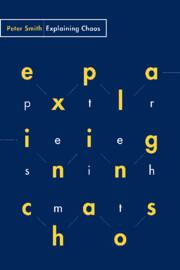10 - Defining chaos
Published online by Cambridge University Press: 22 September 2009
Summary
And what, finally, is chaos? So far, we have taken a few paradigm cases of mathematical models with complex behaviour (e.g. the Lorenz system, the logistic map), noted their intricate features, and then asked some key questions about the role that such infinitely structured models can have in representing a messy world and explaining natural phenomena. Answering those key questions – the central concern of this book – does not at all depend on having a sharp official criterion for separating the strictly chaotic from the non-chaotic cases.
A quick glance at the research literature (in journals like Physica D) shows that working applied theorists also proceed without any agreed precise definition of what counts as ‘chaos’. Rather, the term is typically used quite loosely, to advertise the presence of some interesting cluster of the phenomena that we have illustrated – e.g. exponential error explosion, the existence of a fractal attractor, the equivalence to a ‘symbol shift’ dynamics with product-random output, and so forth. Still, there is some interest in reviewing various options for giving a tidy definition (and some philosophical interest in reflecting on the nature of this definitional enterprise).
In this chapter, then, we consider possible definitions of chaos for (the dynamics in) a mathematical model. We have already offered a rough indication of how, given such a definition, we can extend the notion to apply to some real-world dynamical behaviour.
- Type
- Chapter
- Information
- Explaining Chaos , pp. 165 - 184Publisher: Cambridge University PressPrint publication year: 1998



